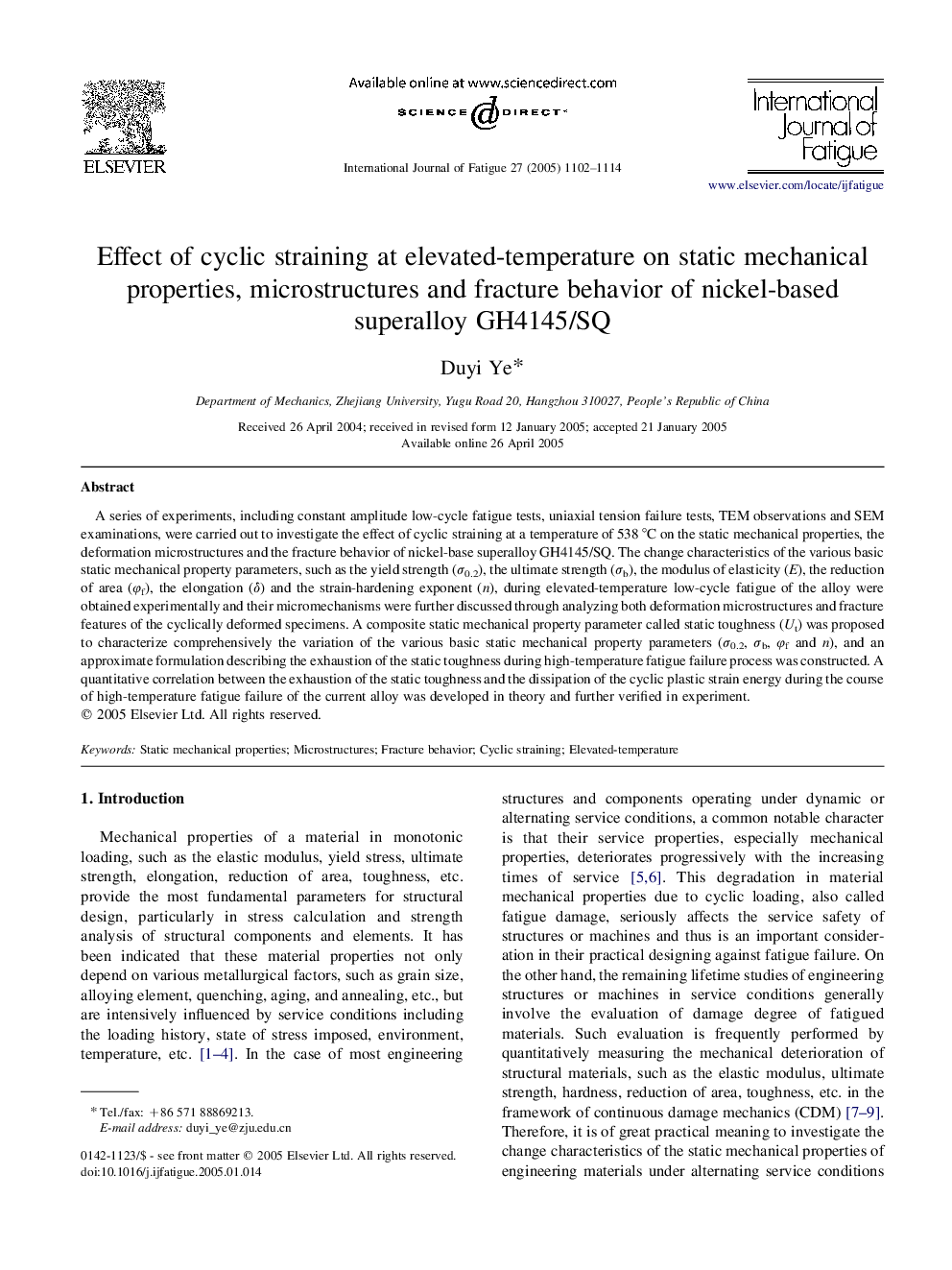| Article ID | Journal | Published Year | Pages | File Type |
|---|---|---|---|---|
| 9703919 | International Journal of Fatigue | 2005 | 13 Pages |
Abstract
A series of experiments, including constant amplitude low-cycle fatigue tests, uniaxial tension failure tests, TEM observations and SEM examinations, were carried out to investigate the effect of cyclic straining at a temperature of 538 °C on the static mechanical properties, the deformation microstructures and the fracture behavior of nickel-base superalloy GH4145/SQ. The change characteristics of the various basic static mechanical property parameters, such as the yield strength (Ï0.2), the ultimate strength (Ïb), the modulus of elasticity (E), the reduction of area (Ïf), the elongation (δ) and the strain-hardening exponent (n), during elevated-temperature low-cycle fatigue of the alloy were obtained experimentally and their micromechanisms were further discussed through analyzing both deformation microstructures and fracture features of the cyclically deformed specimens. A composite static mechanical property parameter called static toughness (Ut) was proposed to characterize comprehensively the variation of the various basic static mechanical property parameters (Ï0.2, Ïb, Ïf and n), and an approximate formulation describing the exhaustion of the static toughness during high-temperature fatigue failure process was constructed. A quantitative correlation between the exhaustion of the static toughness and the dissipation of the cyclic plastic strain energy during the course of high-temperature fatigue failure of the current alloy was developed in theory and further verified in experiment.
Keywords
Related Topics
Physical Sciences and Engineering
Engineering
Mechanical Engineering
Authors
Duyi Ye,
